A closer look at the Japan Pavilion at the 60th Venice Biennale. Yuko Mohri takes a curious approach to contemporary conflicts and global crises.
“Yuko Mohri: Compose” 2024 Installation, Japan Pavilion at the 60th International Art Exhibition – La Biennale di Venezia Photo by kugeyasuhide Courtesy of the artist, Project Fulfill Art Space, mother’s tankstation, Yutaka Kikutake Gallery, Tanya Bonakdar Gallery
Yuko Mohri: Compose
The 60th International Art Exhibition, the Venice Biennale, runs from April 20 through November 24 at the Giardini and Arsenale venues.
The Japan Pavilion features Compose by contemporary artist Yuko Mohri, curated by Sook-Kyung Lee (Director of the Whitworth Art Gallery, University of Manchester). This is the first time in history that a foreign curator has overseen the Japan Pavilion.
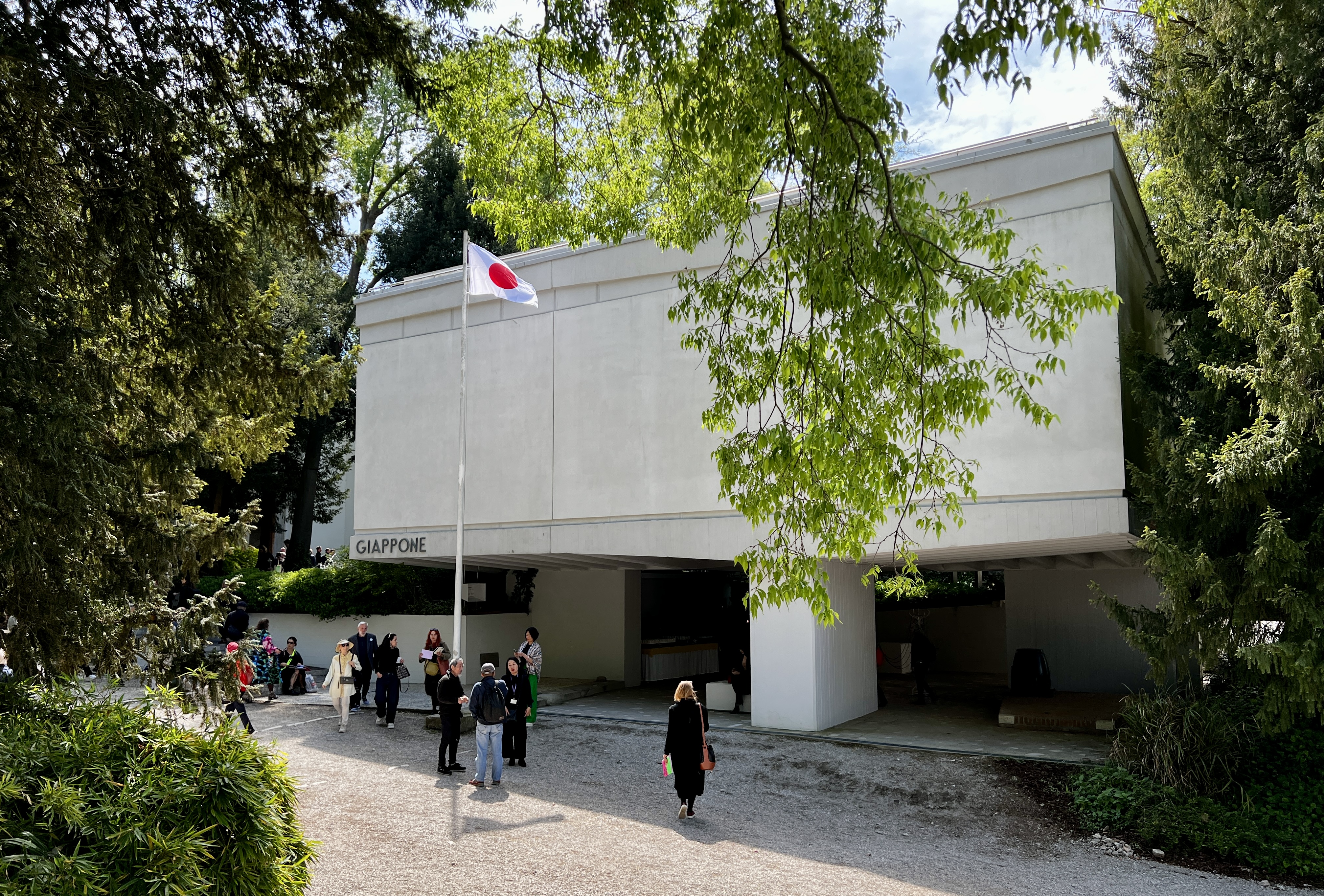
Located in the Giardini, the Japan Pavilion is a unique architectural structure designed by Takamasa Yoshizaka, who studied under Wajiro Kon and modern architecture pioneer Le Corbusier. Mohri started her research in Venice last summer and spent several months interacting with the architecture and its surroundings, turning the Japanese Pavilion into her studio.
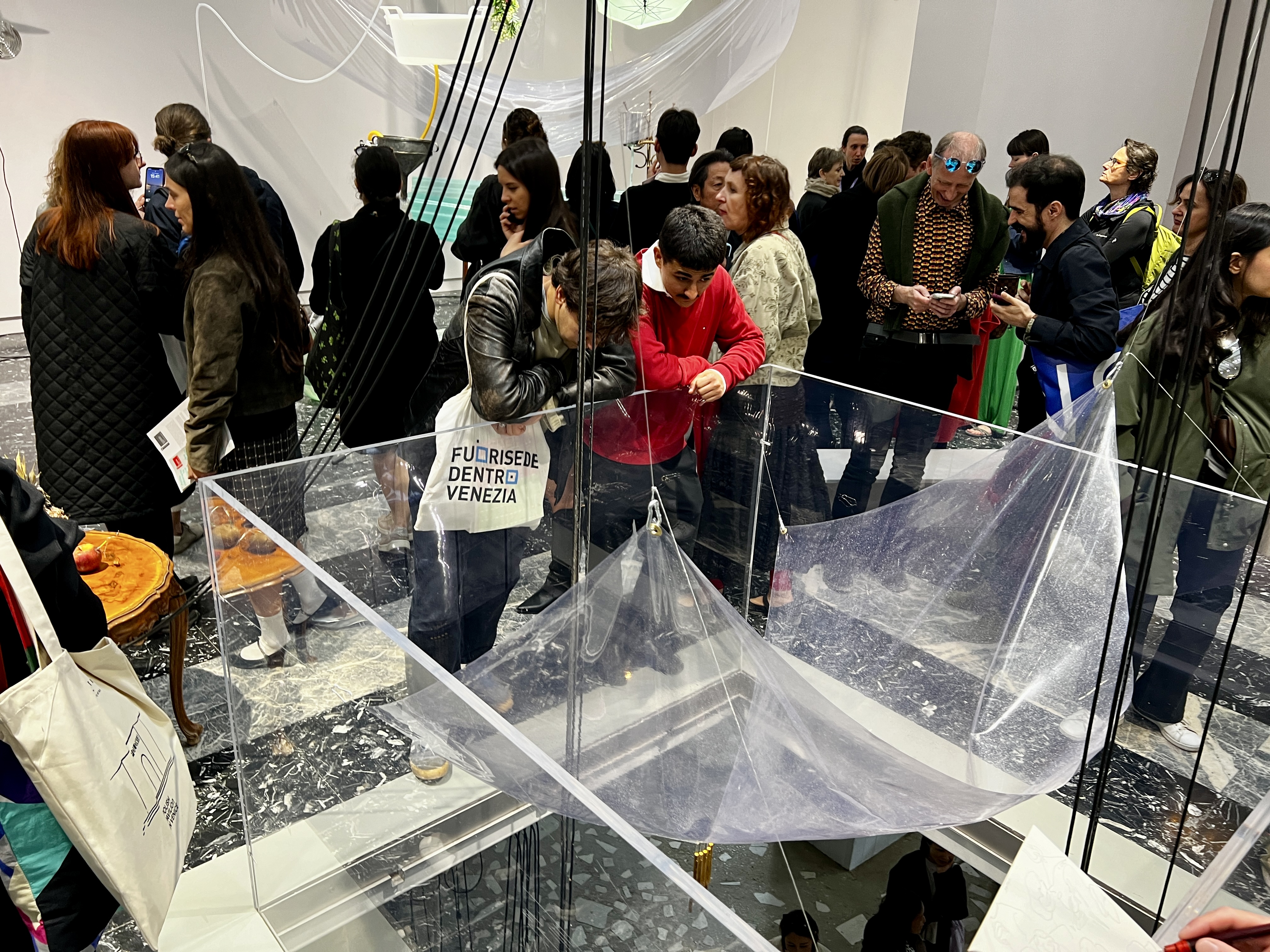
The leaky ceiling in the City of Water
Upon arriving at the Japan Pavilion and entering the open-air pilioti, one is immediately surprised. A square hole in the pavilion’s center allows visitors to look down into the piloti from the second-floor exhibition space. Usually covered with glass, the hole is left open, allowing the artwork to extend up and down. The structure is also connected to the outside by a second hole in the ceiling. Like a Mobius loop, everything is connected, erasing all boundaries. This is a fitting use of space for Yuko Mohri, whose work seeks to generate change that the environment or humans cannot control. It rained heavily the day before the press preview, but Mohri was enthusiastic to take on the challenge, as the openings in the structure invite not only rain but also sunlight, wind, and ambient sounds into the exhibition.
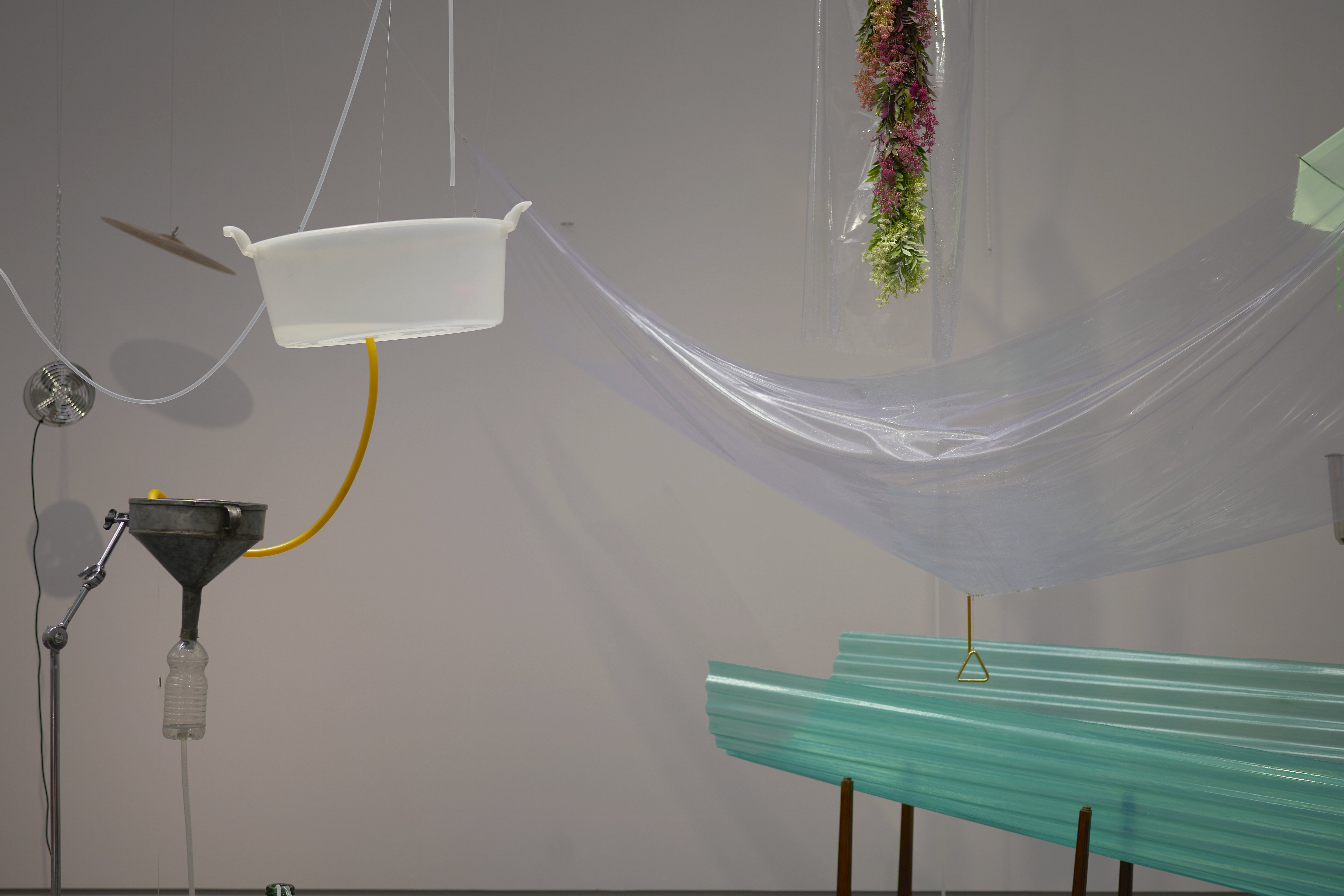
The exhibition centers on the artist’s most famous series, Moré Moré (Leaky). However, it is a new work unique to Venice. The starting point was the fieldwork series Moré Moré Tokyo (Leaky Tokyo), during which Mohri found and photographed emergency measures taken by subway staff with buckets, hoses, plastic bottles, and other tools to stop water leaks in Tokyo subway stations. Moré Moré (Leaky) continues the fieldwork and is constructed as an installation with a circulating water system that intentionally causes leaks.
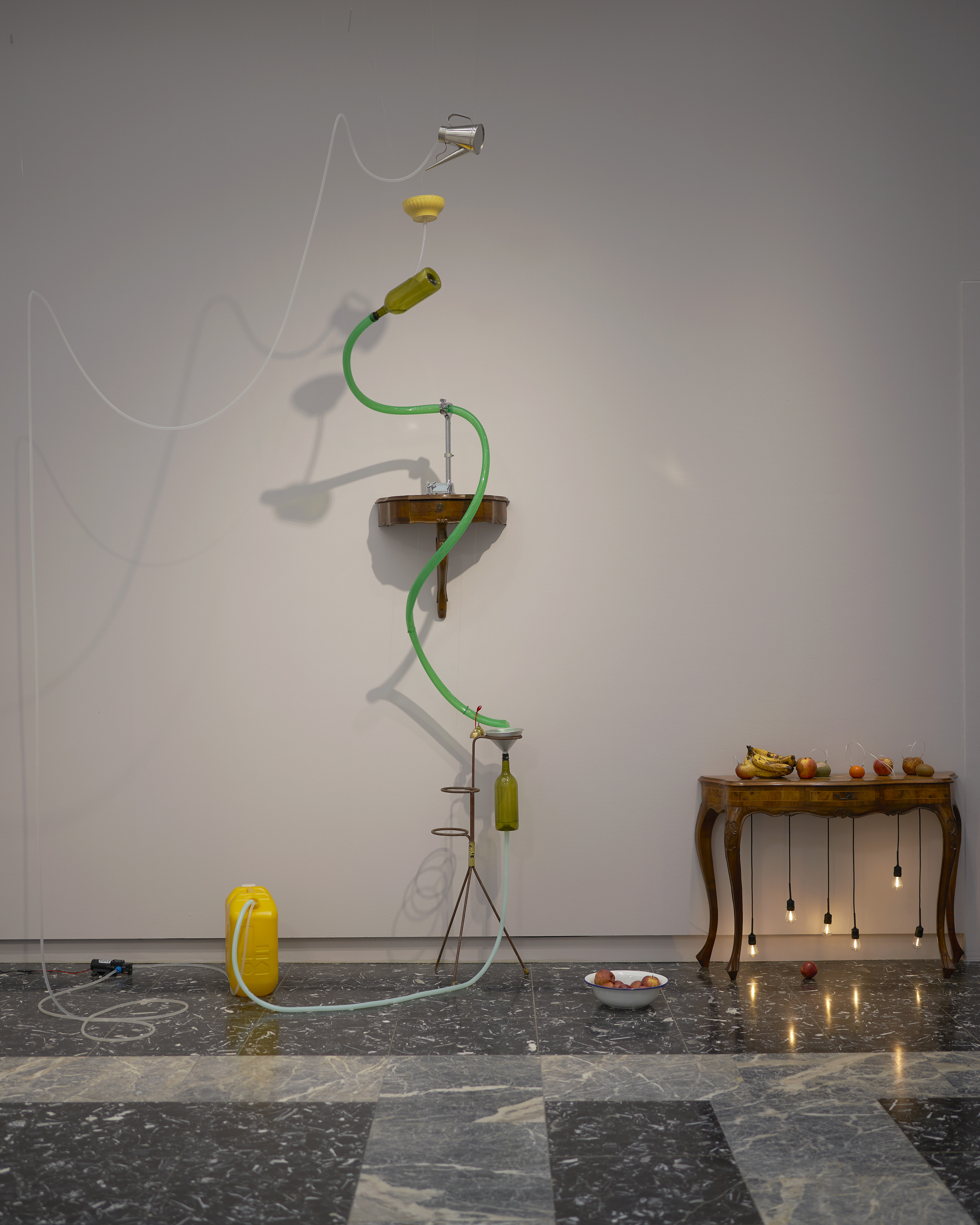
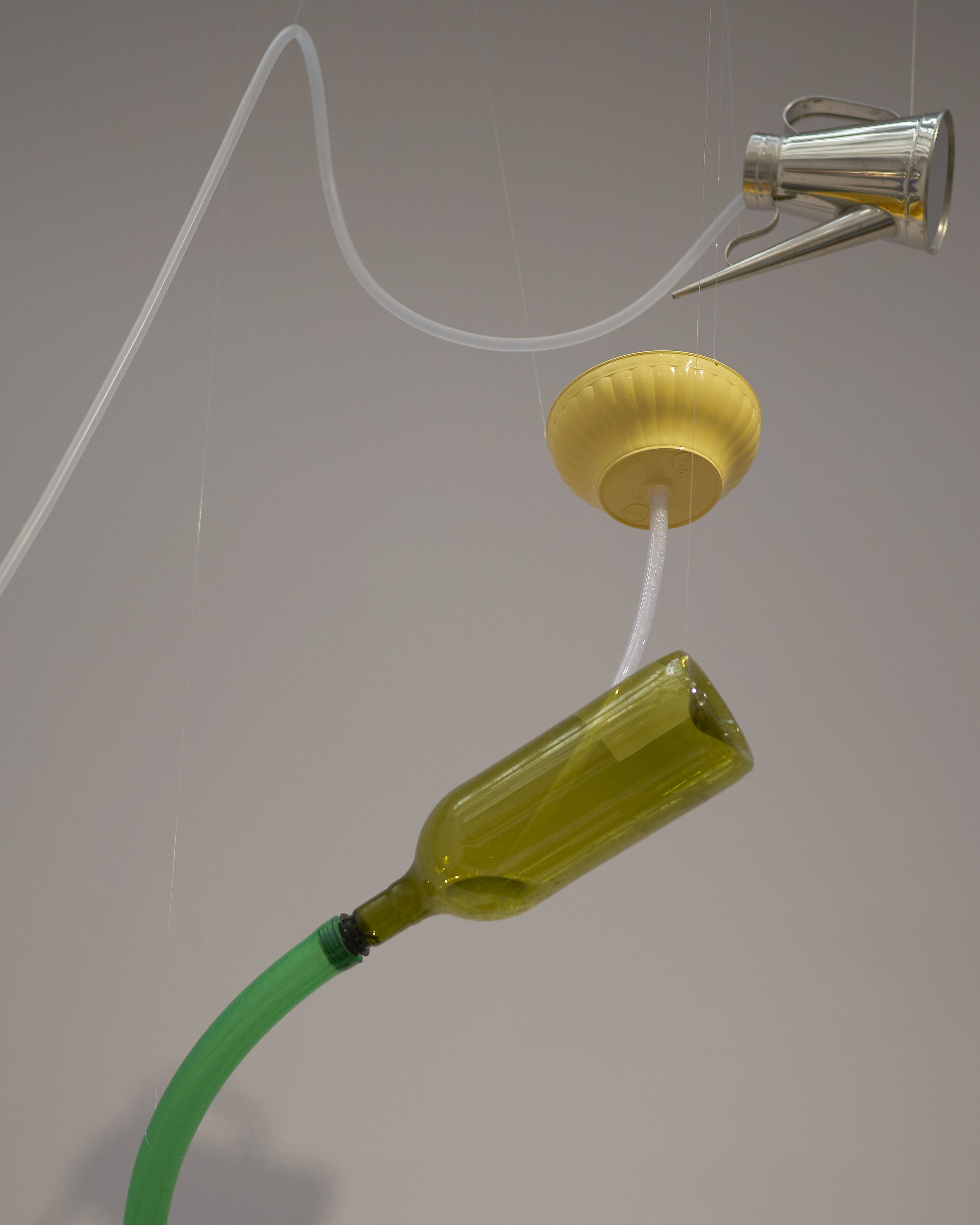
For this exhibition, Mohri used various everyday objects obtained from antique shops, furniture stores, and flea markets in the Venetian suburbs. The circulating flow of water is presented as a kinetic sculpture. Although Mouri has been working with water as a material for a long time, she explains that the first thing that came to her mind when planning the exhibition was the floods in Venice, the city of water. The exhibition is cheerful, humorous, and elegant yet addresses fundamental climate change issues.
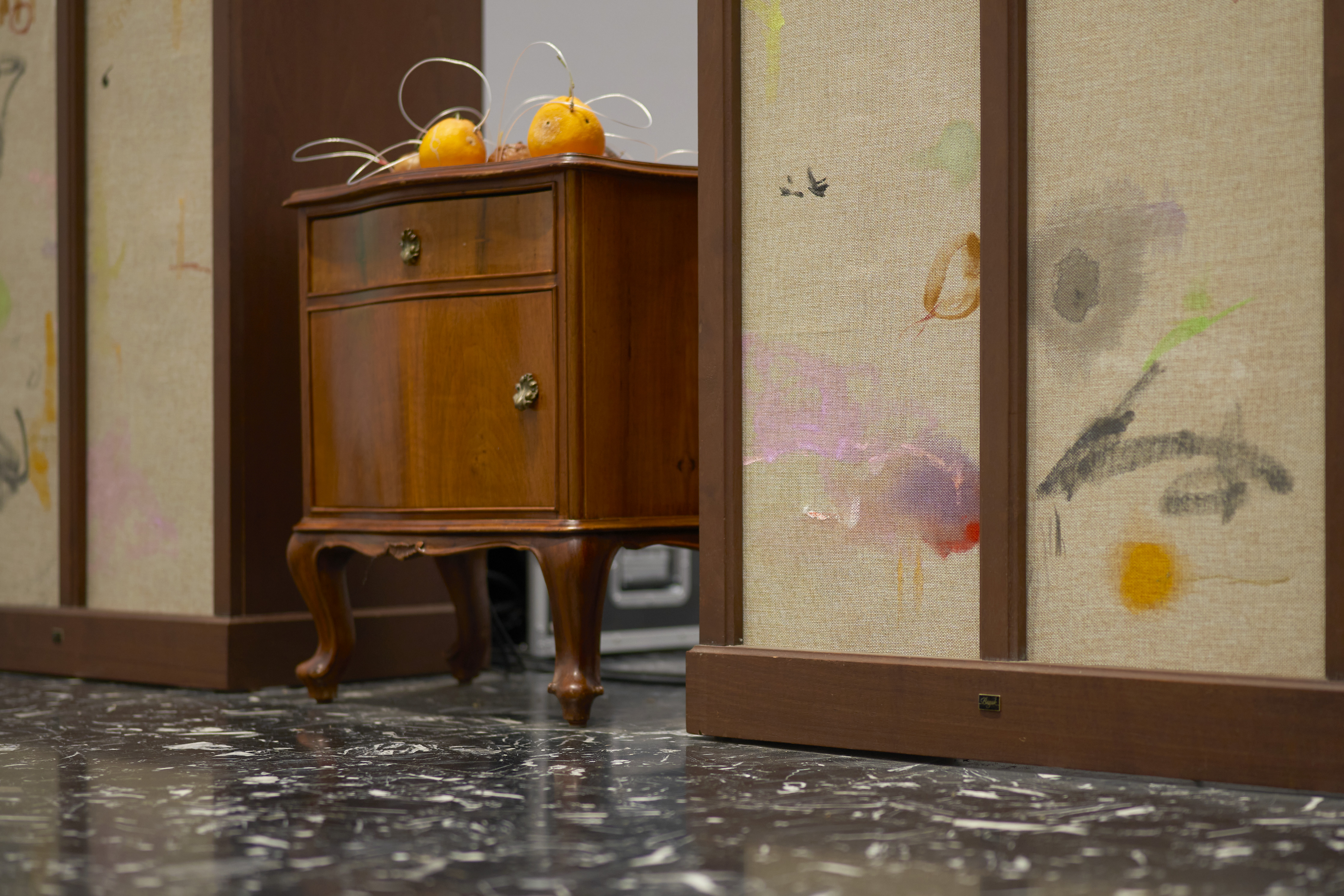
Composing harmony with local fruits
Mohri also approached local Venetian grocers and farmers and purchased fruit for her installation. Decomposition generates drone sounds and flickering lights from electrodes inserted into fruit, which convert their ever-changing moisture into electric signals. The decaying fruit is then collected in the compost bins in the pilotis and is transformed into fertilizer for the plants in the Giardini.

Commenting on the exhibition’s title, Sook-Kyung Lee writes in the statement:
With a title that etymologically signifies “to place together (com+pose),” the exhibition asks what it means for people to be and work together in a world challenged by division, conflicts, and multiple global crises. Mohri observes how crises bring out the greatest creativity in people – this is the primary idea behind Mohri’s project, initially inspired by the Tokyo subway personnel’s resourceful measures against water leaks. The water leaks are never fully fixed, and the fruits end up in the compost to rot in Mohri’s installation, but these apparently futile endeavors indicate a glimpse of the hope that our humble creativity might bring about.
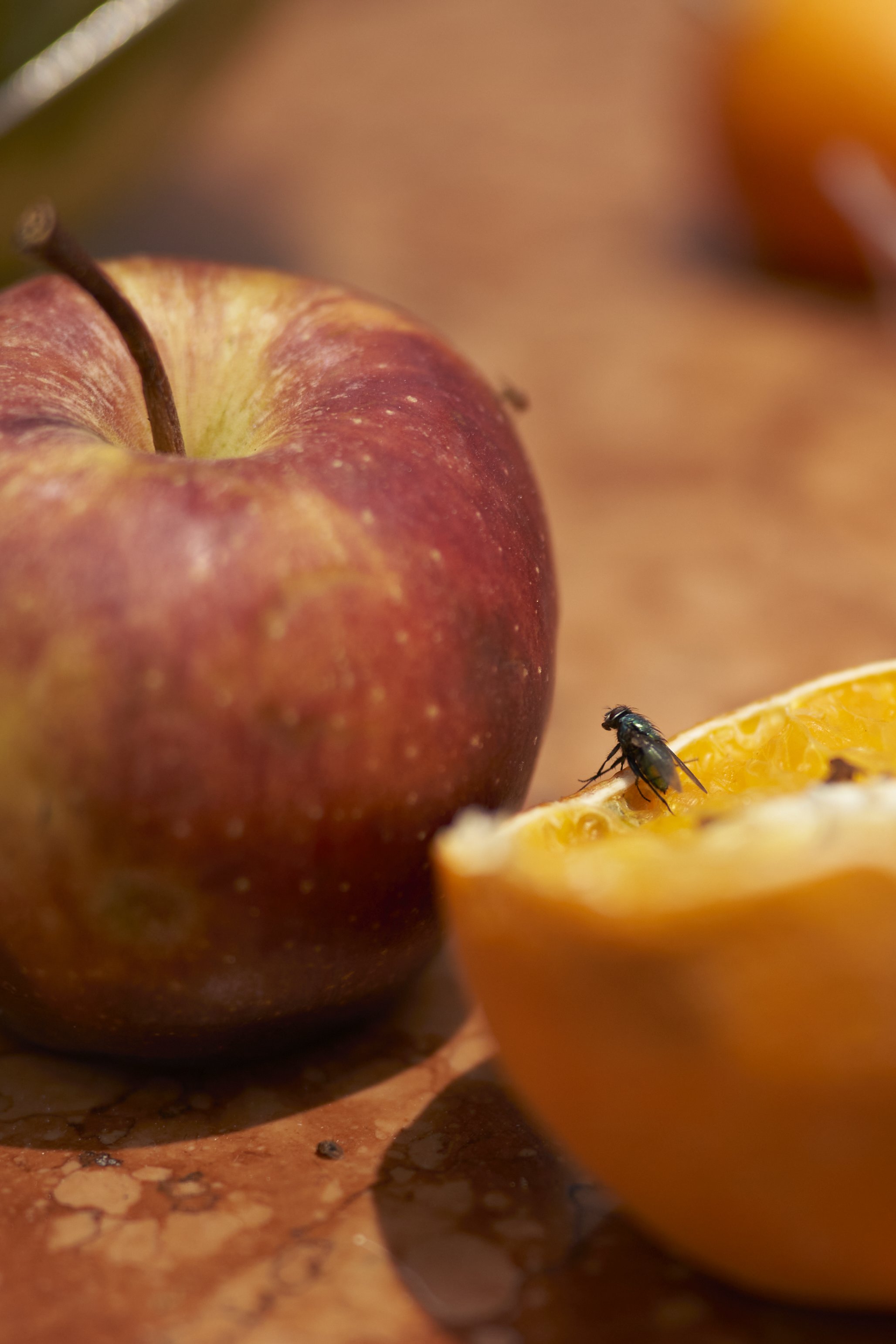
Compose is a mixture of sounds and visuals, as well as the scent of ripening fruit, the fresh spring breeze in the Giardini, the glowing sunlight, and the voices of visitors, all creating a unique time and space. As the seasons change from spring to autumn, the exhibition will also change its appearance.
Stay tuned for the upcoming interview with Yuko Mohri and Sook-Kyung Lee.
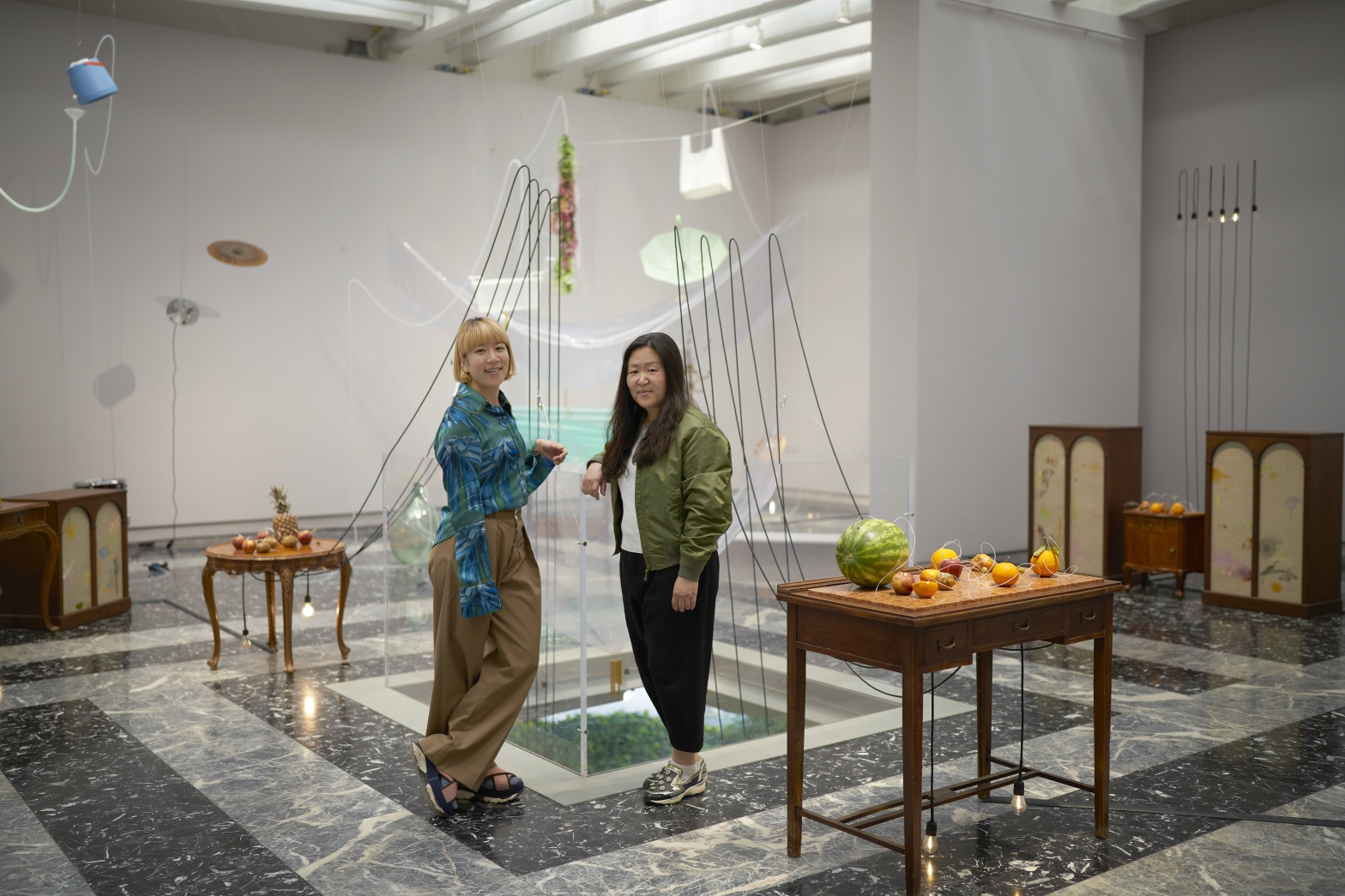
Yuko Mohri
Born in 1980 in Kanagawa, Japan, artist Yuko Mohri lives and works in Tokyo. She approaches installation and sculpture not to compose (or construct) but to focus on “phenomena” that constantly shift according to various conditions, such as their environment. In recent years, she has also explored this idea through video and photography. Mohri has participated in numerous international group exhibitions, including 14th Gwangju Biennale (2023), 23rd Biennale of Sydney (2022), 2021 Asian Art Biennial (National Taiwan Museum of Fine Arts, Taichung, 2021), 34th Bienal de São Paulo (Ciccillo Matarazzo Pavilion, 2021), Glasgow International 2021 (The Pipe Factory, 2021), The 9th Asia Pacific Triennial of Contemporary Art (Queensland Art Gallery | Gallery of Modern Art, Brisbane, 2018), Japanorama: New Vision on Art since 1970 (Centre Pompidou-Metz, 2017), 14th Biennale de Lyon (Musée d’art contemporain de Lyon, 2017) and Kochi-Muziris Biennale (2016). Her works are in the collections of the Ashmolean Museum (Oxford), Centre Pompidou (Paris), M+ (Hong Kong), Musée d’art contemporain de Lyon (Lyon), The National Museum of Modern Art Kyoto (Kyoto), Taoyuan Museum of Fine Arts (Taoyuan), Queensland Art Gallery (Brisbane), etc.
Sook-Kyung Lee
Dr. Sook-Kyung Lee was the Senior Curator at the International Art at Tate Modern, London, UK, where she curated several major exhibitions such as Richard Bell (2023), A Year in Art: Australia 1992 (2022-23) and Nam June Paik (2019-20). She was also the Artistic Director of the 14th Gwangju Biennale (April 7-July 9, 2023), Korea, and served as Commissioner & Curator of the Korean Pavilion at the 56th International Art Exhibition in 2015. Lee was recently appointed Director of the Whitworth Art Gallery, University of Manchester.

